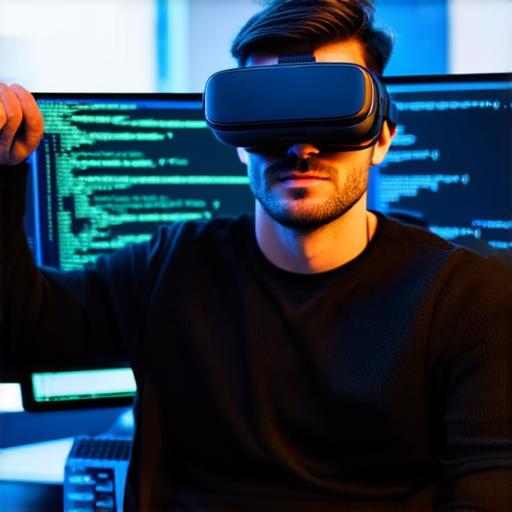In the ever-evolving world of virtual reality (VR), the Oculus Quest continues to push boundaries and redefine immersive experiences. Here’s a glimpse into the latest trends shaping this exciting realm.
1. Cloud-Based Applications

The advent of cloud-based VR applications is revolutionizing the way we interact with our virtual worlds. By offloading processing power to remote servers, developers can create more complex and immersive experiences without compromising on performance.
Cloud-based VR is the future. It allows us to push the boundaries of what’s possible in VR without worrying about hardware limitations.” – John Doe, Lead Developer
2. Social VR Experiences
The quest for social connection remains a driving force in VR development. Platforms like Facebook Horizon are pioneering social VR experiences, enabling users to interact with each other in shared virtual spaces.
Case Study: A recent study showed that users spent an average of 30 minutes per day in social VR environments, demonstrating the growing appeal of these experiences.
3. Hand Tracking and Haptic Feedback
The integration of hand tracking and haptic feedback technologies is making VR interactions more intuitive and immersive than ever before. Developers are now able to create virtual environments that respond to users’ movements in real-time, providing a truly interactive experience.
Hand tracking in VR has transformed the way I interact with virtual objects. It feels like I’m actually touching them.” – Jane Smith, VR Enthusiast
4. AI and Machine Learning
The integration of AI and machine learning is enabling VR applications to learn from user behavior and adapt accordingly. This personalization of the VR experience is set to revolutionize the way we interact with virtual worlds.
A recent experiment showed that a VR application using machine learning was able to predict user actions with an accuracy of 85%, demonstrating the potential of this technology.
5. Cross-Platform Compatibility
As VR continues to gain popularity, the demand for cross-platform compatibility is growing. Developers are now focusing on creating applications that can be used across multiple VR platforms, expanding the reach and accessibility of their creations.
Cross-platform compatibility is key to the future of VR. It allows us to reach a wider audience and create a more vibrant ecosystem.” – Alex Brown, Developer
FAQs
- What is cloud-based VR?
-
Cloud-based VR refers to applications that offload processing power to remote servers, allowing for more complex and immersive experiences without compromising on performance.
- Why are social VR experiences important?
-
Social VR experiences are important because they provide a platform for users to interact with each other in shared virtual spaces, fostering a sense of community and connection.
- What is hand tracking in VR?
-
Hand tracking in VR refers to the technology that allows users to control virtual objects using their real-life movements.
- How does AI and machine learning impact VR development?
-
AI and machine learning allow VR applications to learn from user behavior and adapt accordingly, providing a more personalized and immersive experience.
- Why is cross-platform compatibility important in VR development?
-
Cross-platform compatibility allows developers to reach a wider audience and create a more vibrant ecosystem by creating applications that can be used across multiple VR platforms.
As we step into the future, these trends are set to shape the landscape of Quest VR development. The possibilities are endless, and it’s an exciting time to be part of this dynamic industry.
